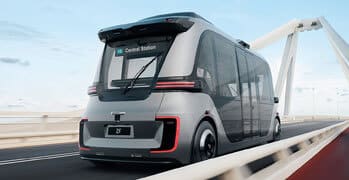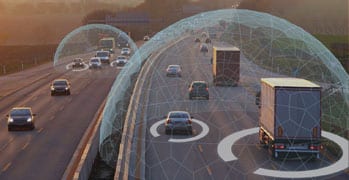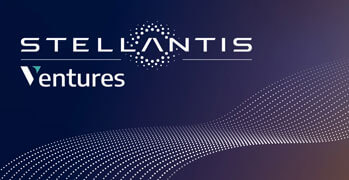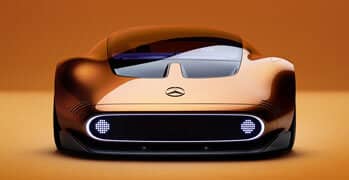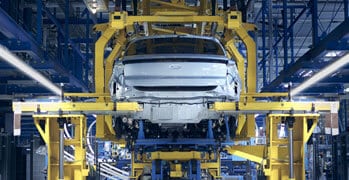

H1ST VISION, THE CONCEPT CAR DESIGNED BY SOFTWARE RÉPUBLIQUE: A HUMAN-CENTRED VISION OF MOBILITY FOR TOMORROW
>> A true experience beyond automotive mobility, H1st vision is not just a concept car: it is a tangible vision of tomorrow's mobility experience
An open innovation ecosystem created by six large companies (Atos, Dassault Systèmes, Orange, Renault Group, STMicroelectronics and Thales), Software République has set itself clear objectives to help create a European ecosystem for sustainable, sovereign and safe mobility. Its roadmap sets out the ambition of launching 10 new services and products, incubating 50 or more startups, and offering services in more than 50 geographies around the world by 2025.
Created only two years ago, Software République is staging the world premiere of a collaborative concept at the Viva Technology 2023 exhibition. It incorporates functional and innovative technologies which illustrate its human-centred visions of the mobility of the future. Its name is H1st vision (Human First vision).
It's a revolution in mobility, bringing together 20 concrete, operational innovations.
This physical vehicle doubles up as a virtual replica, a virtual twin in a digital universe where systems that are currently independent (infrastructure, energy, public services, users of different categories) communicate. This makes it possible to model, visualise and simulate the different use cases that could arise in the real world. Thanks to its interconnection with its environment, H1st vision is in constant dialogue with digital and physical ecosystems. A true experience beyond automotive mobility, H1st vision is not just a concept car: it is a tangible vision of tomorrow's mobility experience.


The 20 innovations in this technology demonstrator are centred on people. They are all operational: they take care of the driver, their passengers and other road users.
H1st vision for example features:
> all-new and secure biometric access control
> a one-of-a-kind sound experience inside
> optimised vehicle range and charging
> a driver and vehicle health monitor and assistant
> predictive alerts to protect occupants and other people on the road, using predictive alerts
H1st vision is packed with the expertise of Software République’s members, which are all major players, and promising startups selected for their unique contributions. It was developed by a team of 100 people in a record six months. With this functional virtual and real concept, Software République is demonstrating the relevance of the open innovation model for incubating true industrial projects that are helping to make Europe a prominent hub for the mobility of the future.
HIGHLIGHTS
[Device-free car access and the Software République Avatar] Simple, intuitive access
Device-free car access technology is a simple and swift way to unlock the vehicle – without any hardware! You don’t need to hold your smartphone in your hand or carry your card or key in your pocket, the access control mechanism is ironclad, and the experience is effortless and seamless.
You open H1st vision remotely using two cutting-edge authentication technologies. Users create a profile on a tablet beforehand. Their data (name, height, a photo of their face and a video of them walking) is encoded and stored in an ultra-secure virtual container integrated into the car, the Digital ID Wallet.
The vehicle recognises the registered driver and passengers approaching on either side, based on their posture (using cameras on the wing mirrors), when they are up to six metres away. Then it recognises their face up to three metres away (a camera on the centre pillar between the two doors switches on once the posture camera has checked their gait). These two authentication technologies complement each other and green-light the users using a maximum-security protocol. A projector built into the front headrest displays Software République’s avatar on the rear window, greets the user by name and asks them if they want to step in. All the user has to do is say "Yes" and the door opens. Then the avatar is displayed on the dashboard screen. The camera in the windshield mirror identifies the driver and any passengers accessing the vehicle, and enables ignition based on the credentials in their profile. The driver or passenger seat automatically moves back or forth to the right position for the person the car has identified.
This novel authentication system helps to simplify car rental, sharing, pooling and driving licence checks.
[Driver private alert] A localised audible alert
Spatialised sound enhances on-board safety. For example, one of the two tweeters in his headrest (the one on the side where a hazard could occur) will audibly alert the driver of an approaching emergency vehicle.
That way, it can route sound to the speakers in that passenger’s headrest (there are two tweeters per seat). Each passenger, in other words, has their own personal sound space, for example to make a phone call. The possible extensions of these features include immersive musical creations – for instance the two tracks by Jean-Michel Jarre sampled especially for the H1st vision concept car.
[Driver private alert] A localised audible alert
Spatialised sound enhances on-board safety. For example, one of the two tweeters in his headrest (the one on the side where a hazard could occur) will audibly alert the driver of an approaching emergency vehicle.
Simpler mobility
The H1st vision concept car is designed to simplify everyday mobility in general – and electric mobility in particular. The technologies on board can for instance locate, book and pay for a parking space remotely.
[Park & charge real-time access] Intelligent parking and charging
By pinpointing available parking spaces and charging stations using intelligent sensors coupled with data from connected vehicles and mobility service operators, H1st vision offers users a choice of three services depending on their needs:
> Closest: the spot nearest their final destination, for example a home terminal using the Plug Inn application
> Fastest: a spot near public or other modes of transport. Multimodal travel reduces carbon footprints and may help to ease congestion. To facilitate the user's journey, H1st vision for example includes self-service bicycle rental stations operated by partners near public car parks
> The most economical: for instance a V2G-compatible charging point
[In-car payment] Payment on-board
Park and charge services can be booked remotely and paid for in advance via a chatbot (a single interoperable enhanced messaging interface). This interface is standard and universal. Service providers can have actual conversations with the vehicle’s user through the enhanced messaging service.
The secure system in the car releases payment and displays a receipt on the dashboard. So you can for example pay to charge your battery without stepping out of the car. Payment is secured via Mobilize Wallet, a quick and safe service that can be used instead of several credit cards, tags and apps.
Health and safety are top priorities for everyone. The technology developed by an open innovation ecosystem such as Software République can play the role of guardian angel. The H1st vision concept car is packed with pioneering technology to make mobility safer for the people in it and everyone else on the road.
The driver’s health
H1st vision is pioneering a new active safety system: monitoring the driver’s health and providing assistance. The technology goes beyond the ADASs in modern cars: it enables medical care as well.
[Health monitoring assistant] Your car watches over you
Sensors in H1st vision concept’s steering wheel unintrusively monitor the driver’s heartbeat, any changes in it and its pattern. Another sensor, in the seatbelt this time, analyses their breathing rate. This information about the driver’s health is displayed on the dashboard. Over time, the system checks the driver’s data at any point in time against its "usual" profile. Following analysis, H1st vision concept informs the occupant of their health status.
The Avatar makes suggestions (to adjust temperature or light inside the vehicle, for instance) or offers other advice that may help them feel better. For example, the avatar may prompt a passenger to do a breathing exercise.
[E-mood assistant] Your car gets to know you
The in-car camera and the microphone under the windshield mirror discern the driver’s mood by analysing their voice and facial expressions. The avatar’s look, the colour of the onboard strip and the screen adjust accordingly.
If the e-mood technology detects that the driver is irritated or stressed, it will suggest a breathing exercise to help them relax.
For safer roads
The interconnected H1st vision concept car constantly processes data it obtains in real time from the entire connected ecosystem as well as archived data. Its software platform collects, shares and analyses information from the 4.0 city and road networks, as well as from other vehicles and road users, weather data, etc. The aim is to improve safety in and around the vehicle, in particular through predictive systems. A simulation of this technology is available via the H1st vision concept car’s virtual twin "in" a virtualisation of a real city.
[Predictive risky zone alert] Early warning of accident-prone areas
The H1st vision concept uses accident statistics, the characteristics of the road and its environment (reduced visibility, intersections) to determine the probability of accidents. Capable of anticipating hazards such as accidents or the presence of black ice, it alerts the driver in real time via a display on the dashboard to increase the safety of the occupants and others, and protect the environment.
[Real-time vulnerable road user protection]
The H1st vision concept is hyperconnected to the entire mobility ecosystem. As it is connected in real time to the city, it uses data from infrastructure such as traffic lights and data from people using this infrastructure (for example in other cars, on scooters and on bicycles). The aim is to better protect all users with a system that alerts the driver of imminent danger in a timely manner, even when a vulnerable road user is in a blind spot or in an area with reduced visibility.





